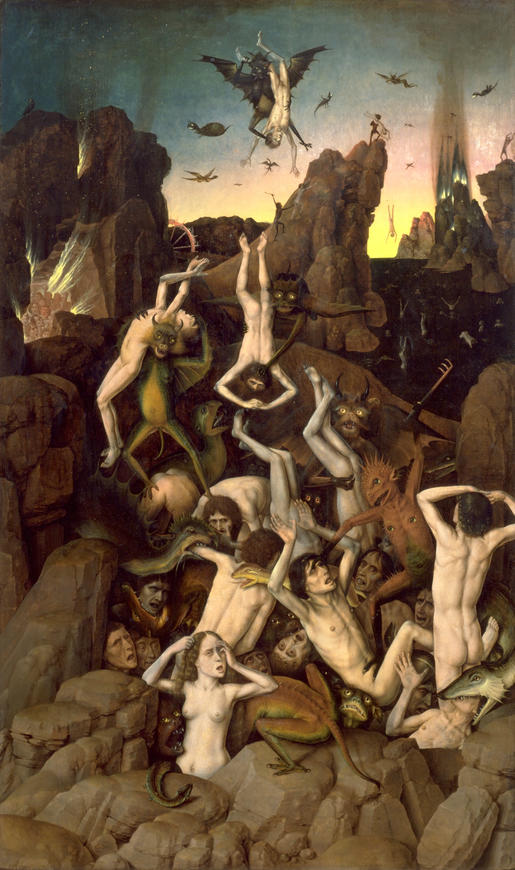In the 15th century, it was very common to depict hell as a place where the damned were piled high amid demonic creatures. The painter innovated by detailing a variety of abuses, such as those described in The Purgatory of Saint Patrick, which recounts Knight Owain's journey to Paradise and Hell. He related these ordeals to the idea of the fall, which is highlighted by the composition, constructed around a vertical line. In the lower half of the image, the damned, tortured by monsters, are dragged down into the bowels of the earth. Their hideously entangled bodies perfectly convey the dreadful nature of the scene.
The visual contrast with the very bright Paradise by the same artist is accentuated by a radically different palette: dominant here are browns and greys, and to a lesser extent cool shades. The artist's masterpiece, this supernatural vision undoubtedly inspired Hieronymus Bosch's evocative works.
Hell and Paradise were perhaps the wings of a triptych depicting the Last Judgement. They have sometimes been identified with elements of a composition made for the town hall in Louvain (now Leuven, Belgium) in 1468, although the dimensions of the panels do not correspond to those described in the archives.
Inv. P 1808

In the 15th century, it was very common to depict hell as a place where the damned were piled high amid demonic creatures. The painter innovated by detailing a variety of abuses, such as those described in The Purgatory of Saint Patrick, which recounts Knight Owain's journey to Paradise and Hell. He related these ordeals to the idea of the fall, which is highlighted by the composition, constructed around a vertical line. In the lower half of the image, the damned, tortured by monsters, are dragged down into the bowels of the earth. Their hideously entangled bodies perfectly convey the dreadful nature of the scene.
The visual contrast with the very bright Paradise by the same artist is accentuated by a radically different palette: dominant here are browns and greys, and to a lesser extent cool shades. The artist's masterpiece, this supernatural vision undoubtedly inspired Hieronymus Bosch's evocative works.
Hell and Paradise were perhaps the wings of a triptych depicting the Last Judgement. They have sometimes been identified with elements of a composition made for the town hall in Louvain (now Leuven, Belgium) in 1468, although the dimensions of the panels do not correspond to those described in the archives.
Inv. P 1808